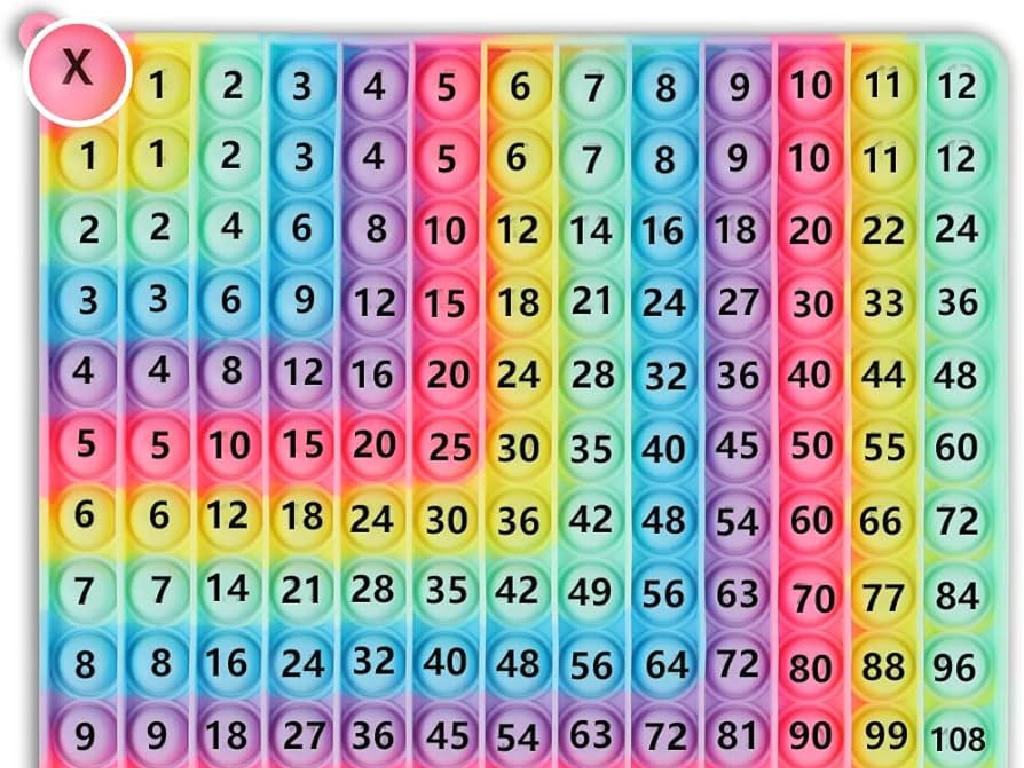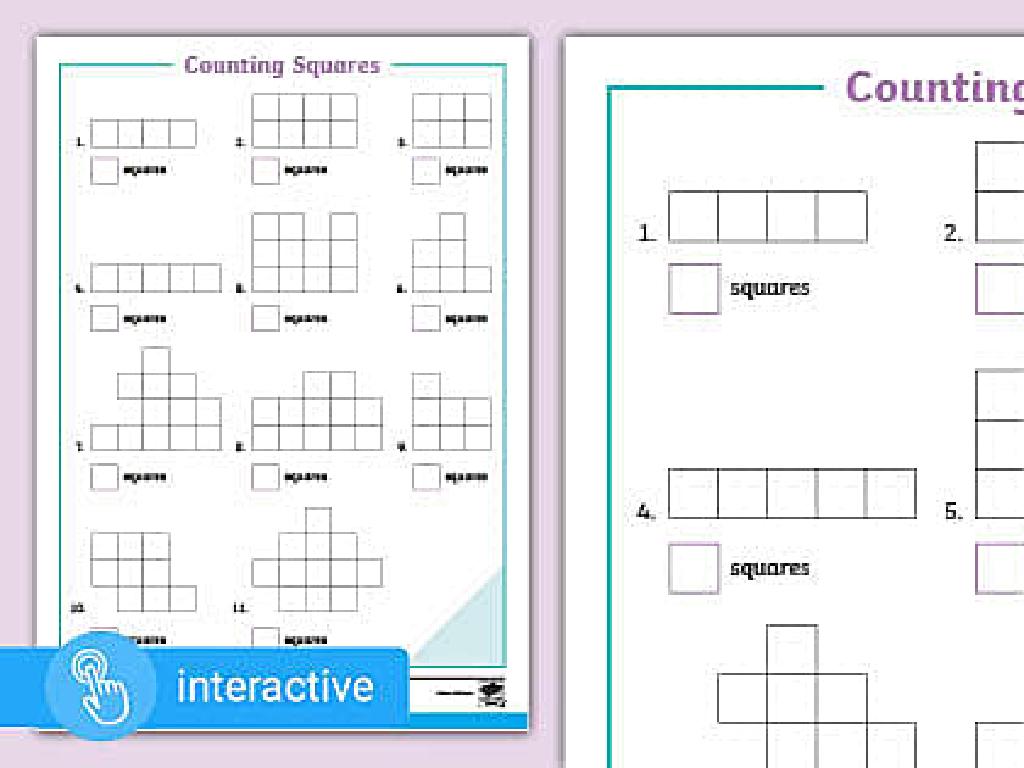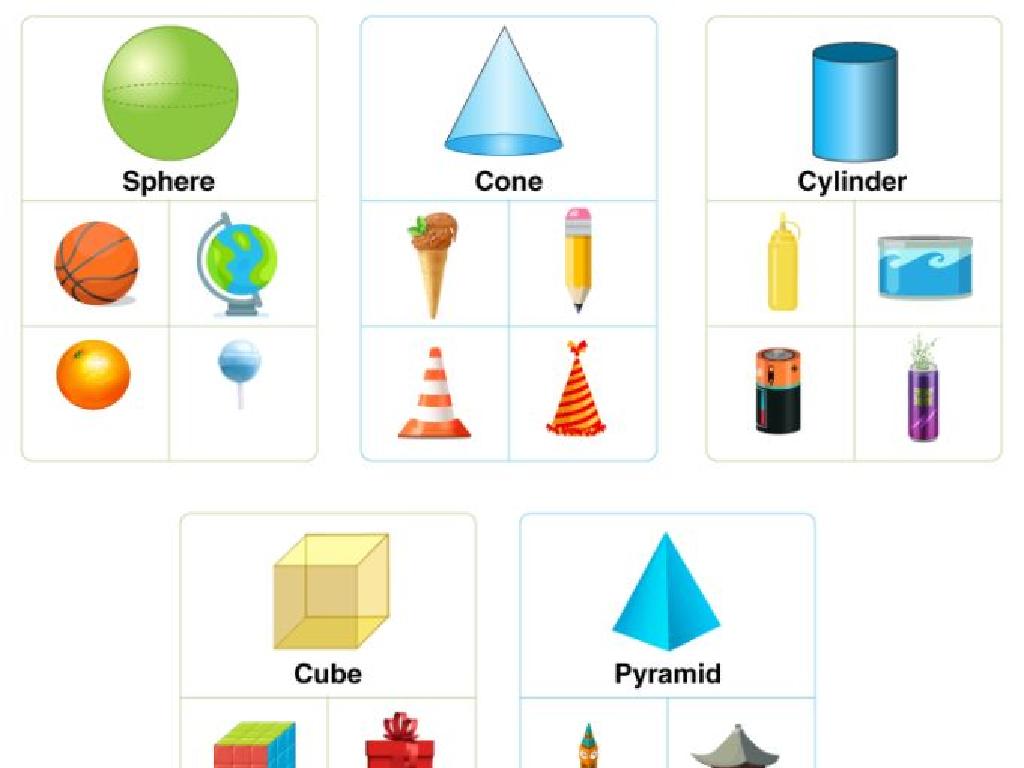Relate Time Units
Subject: Math
Grade: Second grade
Topic: Time
Please LOG IN to download the presentation. Access is available to registered users only.
View More Content
Introduction to Time
– Greetings, brilliant minds!
– Today’s focus: Learning about time
– Relating different time units
– Seconds, minutes, hours: How do they connect?
– Importance of time in daily life
– We use time for daily routines, like knowing when to go to school
|
Begin the class with an enthusiastic greeting to capture the students’ attention. Introduce the concept of time, emphasizing its relevance and omnipresence in everyday life. Explain that understanding time units and their relationships is crucial for daily activities such as following a schedule, knowing when to eat, or when to go to bed. Use examples like comparing 60 seconds to 1 minute, and 60 minutes to 1 hour to illustrate the connection between different units of time. Encourage students to think of activities they do that take about a minute or an hour to further solidify their understanding.
Understanding Time
– Time organizes our day
– Seconds, minutes, hours explained
– 60 seconds make a minute, 60 minutes make an hour
– Clocks help us know the time
– Analog clocks have hands, digital clocks show numbers
– Practice reading clocks
|
This slide introduces the concept of time to second graders. Begin by explaining that time helps us plan activities throughout the day, like knowing when to wake up, go to school, or have lunch. Discuss the units of time: seconds, minutes, and hours, and how they relate to each other. Show them both analog and digital clocks and explain the basics of reading time from them. For example, when the big hand is on 12 and the little hand is on 3, it’s 3 o’clock. Plan an activity where students practice setting the time on classroom clocks or drawing the hands on a clock face worksheet to represent specific times. This practical application will help solidify their understanding of time units and how to read them.
Seconds, Minutes, and Hours
– 60 seconds make a minute
– 60 minutes create an hour
– Practice counting with time
– Let’s count by seconds and minutes to see how they add up to an hour!
– Understanding time relationships
– See how seconds, minutes, and hours are connected
|
This slide introduces the basic units of time and their relationships to each other. Emphasize that there are 60 seconds in a minute and 60 minutes in an hour, which is a foundational concept in understanding time. Engage the students in a counting activity to help them visualize how many seconds are in a minute and how many minutes are in an hour. Use a clock or stopwatch to make it interactive. Explain that these relationships are important for telling time and for understanding how time passes. Encourage students to think of activities that take about a minute or an hour to further illustrate the concept.
Days and Weeks
– 24 hours in one day
– 7 days make a week
– Names of the week days
– Sunday, Monday, Tuesday, Wednesday, Thursday, Friday, Saturday
– Understanding weeks
– How many days are in 2 weeks? Or 3 weeks?
|
This slide introduces students to the basic units of time, specifically focusing on the number of hours in a day and the number of days in a week. It also prompts students to recall and name the days of the week, which is a fundamental aspect of understanding and relating time units. The slide encourages interactive learning by asking students to engage with the concept of weeks by calculating the number of days in multiple weeks. This helps solidify their understanding of the relationship between days and weeks. In the next class, review the days of the week and ask students to share activities they do on specific days to make the concept more relatable.
Using a Clock to Tell Time
– Short hand indicates the hour
– When the short hand is on 3, it’s 3 o’clock
– Long hand points to the minutes
– If the long hand is on 6, it’s half past the hour
– Practice setting the time
– Set the clock to 7:30, where would the hands be?
|
This slide introduces students to the basics of reading a clock, focusing on the hour and minute hands. Explain that the short hand is the hour hand, and it tells us which hour it is. The long hand is the minute hand, and it shows how many minutes past the hour it is. Use a toy clock or a drawing on the board to demonstrate setting the time. For example, if the short hand is on 3 and the long hand is on 12, it’s 3 o’clock. If the short hand is between 3 and 4, and the long hand is on 6, it’s half past three, or 3:30. Encourage students to practice with different times and ask them to show what 7:30 would look like on the clock.
Relating Time Units
– Minutes in 2 hours
– 2 hours have 120 minutes. How did we get that?
– Playtime in seconds
– 30 minutes equal 1,800 seconds. Let’s calculate together!
– Time unit relationships
– Understanding how hours, minutes, and seconds connect.
– Practice with examples
|
This slide aims to help students understand the relationship between different units of time. Start by explaining that there are 60 minutes in an hour, so for 2 hours, we multiply 60 by 2 to get 120 minutes. Then, move on to converting minutes to seconds by multiplying the number of minutes by 60. For example, 30 minutes times 60 seconds gives us 1,800 seconds. Use relatable examples like the duration of a lunch break or a TV show to illustrate these concepts. Encourage students to come up with their own examples and to practice converting between hours, minutes, and seconds to reinforce their understanding.
Time for Fun: Matching Game
– Play a time unit matching game
– Match seconds with minutes
– How many seconds are in one minute?
– Match minutes with hours
– How many minutes are in one hour?
– Who can match them all?
|
This slide introduces a class activity designed to help second-grade students understand the relationship between seconds, minutes, and hours. The matching game will involve cards or interactive elements where students can pair units of time, such as 60 seconds with 1 minute, and 60 minutes with 1 hour. Teachers should prepare matching cards or a digital interactive game prior to the lesson. During the activity, circulate around the room to assist and encourage students. Possible variations of the activity could include timed challenges, team competitions, or creating a large visual clock to help with understanding. The goal is to reinforce the concept of time conversion in a fun and engaging way.
Class Activity: Time Scavenger Hunt
– Find minute-long use objects
– Guess seconds for shoelaces
– How long does it take to tie them?
– Pair up for scavenger hunt
– List your time discoveries
– Share what you find with the class
|
This interactive activity is designed to help students understand the concept of time by relating it to everyday tasks. Students will search for objects in the classroom that they believe take about a minute to use, such as washing hands or sharpening a pencil. They will also estimate the time it takes to tie shoelaces in seconds. Working in pairs, students will engage with one another to complete their scavenger hunt list, fostering teamwork and discussion about time. As a teacher, facilitate the activity by providing examples, guiding the pairs, and ensuring each student participates. After the activity, discuss the findings with the class and correct any misconceptions about time estimates. This will help students better grasp the relationship between seconds and minutes in a fun and interactive way.
Wrapping Up: Time Understanding
– Congratulations on learning time!
– Practice is key to mastery
– Observe daily time usage
– Notice the clock throughout your day
– Keep learning and growing
|
As we conclude today’s lesson on time, it’s important to celebrate the students’ efforts in understanding how to relate time units. Reinforce the idea that regular practice with clocks and time-telling will help solidify their skills. Encourage them to observe clocks at home or in the classroom and to think about how time structures their daily activities, such as playtime, study time, and meal times. Remind them that learning is a continuous journey and that they should feel proud of the progress they’ve made today in understanding time.






